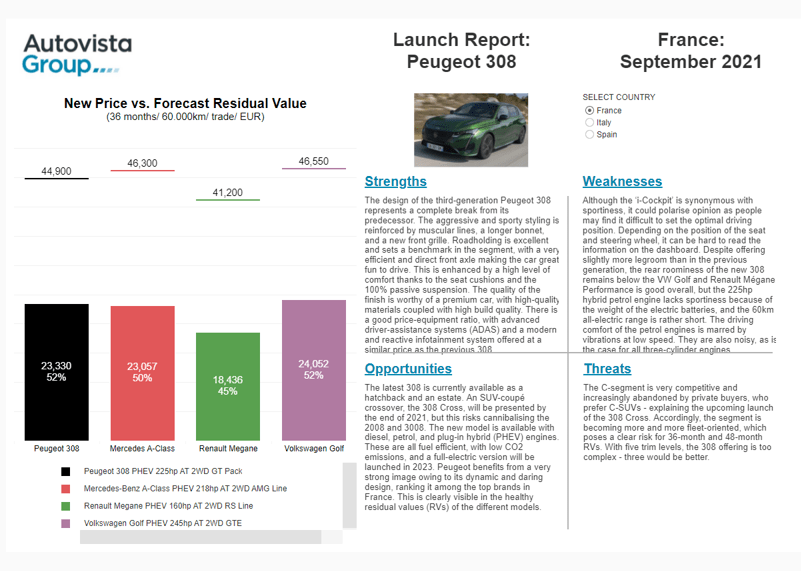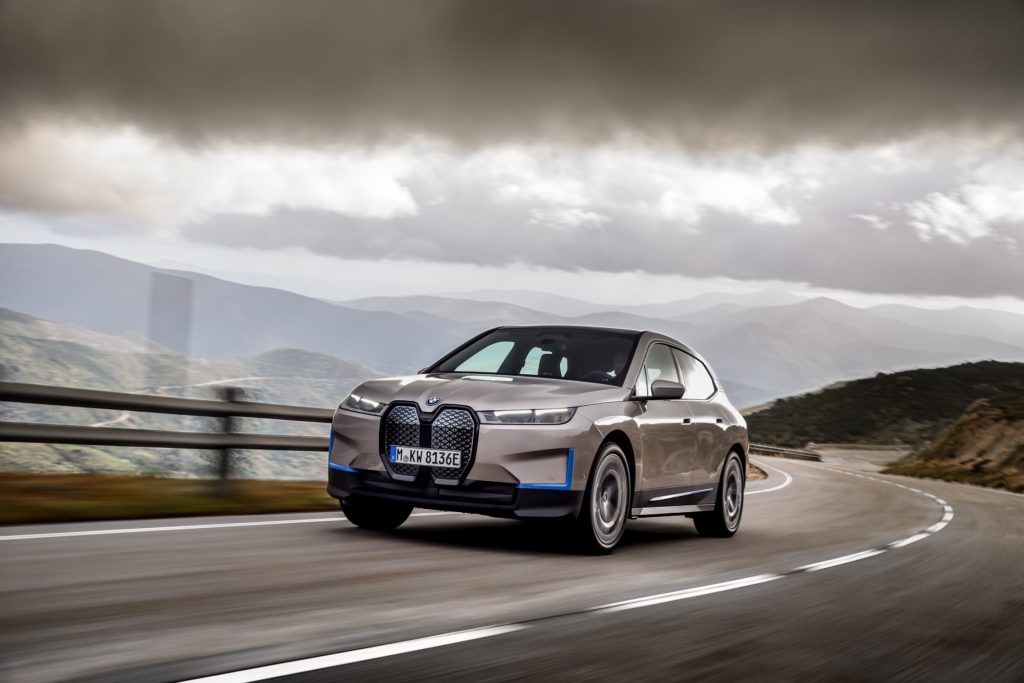Launch Report: Peugeot’s third-generation 308 comes with a keen price-equipment ratio
24 September 2021

The design of the third-generation Peugeot 308 represents a complete break from its predecessor. The aggressive and sporty styling is reinforced by muscular and assertive lines, a longer bonnet, and the new Peugeot logo in the centre of the large grille.
Roadholding is excellent and sets a benchmark in the segment, with a very efficient and direct front-axle making the car great fun to drive. This is enhanced by a high level of comfort thanks to the seat cushions and the 100% passive suspension. The 412-litre boot is one of the largest in the segment, with key rivals offering about 380 litres on average, despite being slightly smaller than in the last-generation model.
The quality of the finish in the new 308 is worthy of a premium car, with high-quality materials coupled with high build quality. It is also attractively equipped, with two-zone climate control, a blind-spot monitor, traffic-sign recognition, a 10-inch central touchscreen, and the 10-inch ‘i-Cockpit.’ The technological content is superior to the predecessor model. The ability to customise the infotainment interface as well as solutions such as the 3D digital cluster set it apart from the competition.
The new Peugeot is available with diesel, petrol, and plug-in hybrid (PHEV) engines. All the engines are fuel-efficient, with low CO2 emissions, and a full-electric version will be launched in 2023. Not many manufacturers offer a PHEV version of their C-segment models, and although performance is good overall, the 225hp engine lacks sportiness because of the weight of the electric batteries, and the 60km all-electric range is rather short.

The latest 308 is currently offered as a hatchback and an estate. An SUV-coupé crossover, the 308 Cross, will be presented by the end of 2021 but risks cannibalising Peugeot’s 2008 and 3008 SUVs.
List prices are competitive overall and there is a good price-equipment ratio, with the latest technologies, such as advanced driver-assistance systems (ADAS) and the modern and reactive infotainment system, offered at a similar price to the previous 308.
Peugeot benefits from a very strong image owing to its dynamic and daring design. This is clearly visible in the healthy sales and residual values (RVs) of the brand’s different models. However, the scarcity of product due to the semiconductor crisis may reduce the launch momentum of the new 308.
Moreover, the C-segment is highly competitive and increasingly abandoned by private buyers, who prefer C-SUVs – explaining the upcoming launch of the 308 Cross. Accordingly, demand for the classic C-segment hatchback has fallen in recent years and is becoming more fleet-oriented, posing a clear risk for RVs.
View the Autovista Group dashboard, which benchmarks the Peugeot 308 in France, Italy, and Spain for more details. The interactive launch report presents new prices, forecast RVs and SWOT (strengths, weaknesses, opportunities, and threats) analysis.



